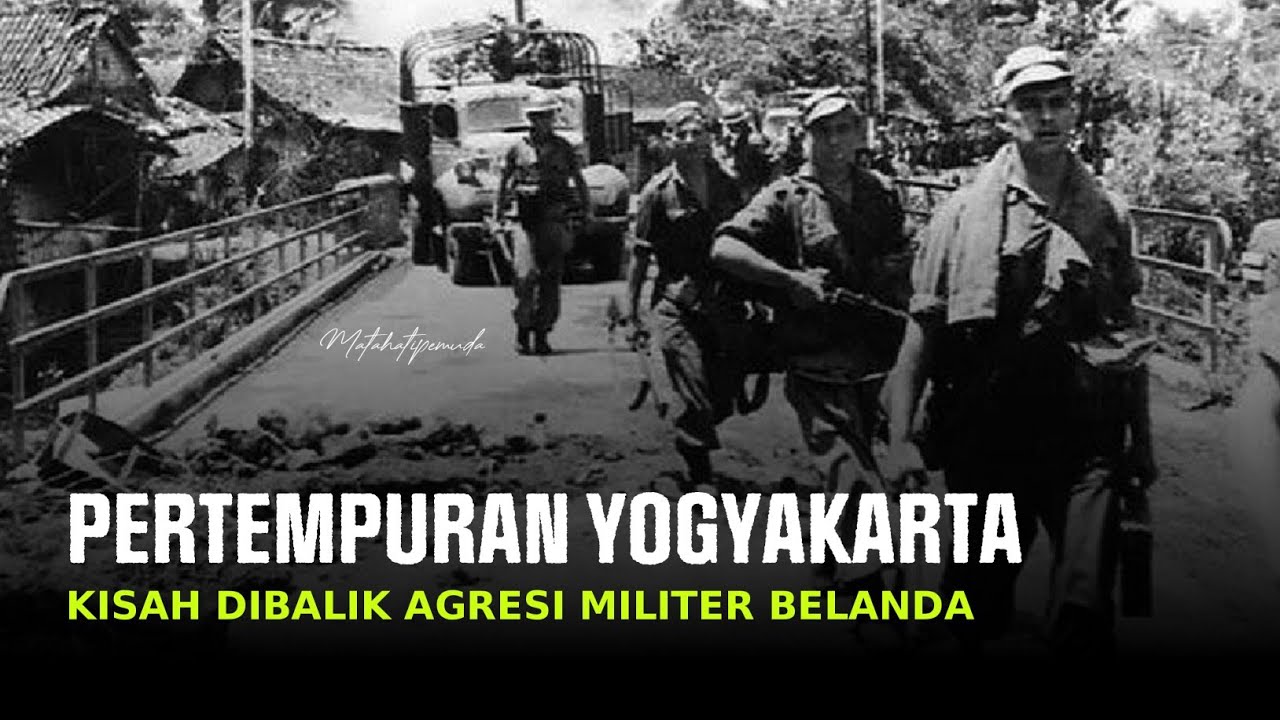AGRESI MILITER BELANDA 1 & 2 SEJARAH SINGKAT
Summary
TLDRThe script details two significant military aggressions by the Dutch in Indonesia during the struggle for independence. The first, on July 20, 1947, aimed to seize rich plantation areas, leading to violent attacks in regions like Bandung and Surabaya, which caused civilian casualties. The Indonesian government protested the violations of international agreements. The second aggression, on December 19, 1948, involved a military assault on Yogyakarta, resulting in the capture of key leaders, including Sukarno and Hatta. This led to the establishment of an emergency government in Sumatra and intensified resistance efforts, notably the General Offensive of March 1, 1949.
Takeaways
- 🇮🇩 The Dutch Military Aggression 1 began on July 20, 1947, with a declaration by Lieutenant Governor General Hubertus Van Hout that the Netherlands was no longer bound by the Linggarjati Agreement.
- 🌍 On July 21, 1947, Dutch forces launched military operations aimed at seizing resource-rich plantation areas in Indonesia, particularly targeting oil fields.
- 🚁 The Dutch military successfully penetrated regions controlled by the Republic of Indonesia, notably in Sumatra and Java.
- 🏙️ Major cities targeted by the Dutch included Bandung, Surabaya, Semarang, and Yogyakarta, which faced air assaults resulting in civilian casualties.
- 📝 The Indonesian government officially protested the Dutch military aggression to the United Nations, claiming it violated international agreements.
- 📅 Under pressure from the UN Security Council on August 15, 1948, the Dutch agreed to cease hostilities and recognize the need for a ceasefire.
- 🚀 The Dutch Military Aggression 2, also known as Operation Kraai, occurred on December 19, 1948, with a military assault on the capital, Yogyakarta.
- 🎙️ The Dutch High Commissioner declared that the Netherlands was no longer bound by the Renville Agreement, coinciding with attacks on the Maguwo Airport.
- 👤 Key Indonesian leaders, including President Sukarno and Vice President Muhammad Hatta, were captured during this aggression, leading to the occupation of Yogyakarta.
- 🛡️ In response to the occupation, the Emergency Government of the Republic of Indonesia was established in Sumatra, and resistance efforts included guerrilla warfare led by General Sudirman.
Q & A
What announcement did Lieutenant Governor-General Hubertus van Hout make on July 20, 1947?
-He announced that the Netherlands would no longer be bound by the Linggarjati Agreement.
What was the primary goal of the Dutch military aggression on July 21, 1947?
-The main goal was to seize resource-rich plantation areas, particularly for oil.
Which regions in Indonesia were targeted by the Dutch troops during the first military aggression?
-The Dutch targeted areas in Sumatra, West Java, Central Java, and East Java.
What were the major cities that Dutch troops aimed to occupy?
-The major cities included Bandung, Surabaya, Semarang, and Yogyakarta.
What type of attack did Yogyakarta face during the Dutch military aggression?
-Yogyakarta was subjected to aerial attacks that resulted in civilian casualties.
How did the Indonesian government respond to the Dutch military actions?
-The government formally protested the aggression to the UN, stating it violated international agreements.
What triggered the second military aggression by the Dutch on December 19, 1948?
-The second aggression was triggered by the announcement that the Netherlands would no longer adhere to the Renville Agreement.
What significant event occurred following the attack on Maguwo Airport?
-The attack marked the beginning of the second military aggression, leading to the capture of key Indonesian leaders.
What was the impact of the fall of Yogyakarta on the Indonesian government?
-The fall led to the establishment of the Emergency Government of the Republic of Indonesia in Sumatra.
What was the 'General Offensive of March 1'?
-It was a coordinated Indonesian resistance effort launched on March 1, 1945, to counter the Dutch aggression.
Outlines

このセクションは有料ユーザー限定です。 アクセスするには、アップグレードをお願いします。
今すぐアップグレードMindmap

このセクションは有料ユーザー限定です。 アクセスするには、アップグレードをお願いします。
今すぐアップグレードKeywords

このセクションは有料ユーザー限定です。 アクセスするには、アップグレードをお願いします。
今すぐアップグレードHighlights

このセクションは有料ユーザー限定です。 アクセスするには、アップグレードをお願いします。
今すぐアップグレードTranscripts

このセクションは有料ユーザー限定です。 アクセスするには、アップグレードをお願いします。
今すぐアップグレード関連動画をさらに表示

Melawan Lupa - Seorang Samurai dalam Perang Kemerdekaan Indonesia

Materi Konferensi Meja Bundar / Sejarah Indonesia

The Battle Of Yogyakarta | Kisah Dibalik Agresi Militer Belanda

MAU MERDEKA? BAYAR UTANG DULU!! Sejarah dan Fakta Tersembunyi Peristiwa Konferensi Meja Bundar (KMB)

Indonesia Calling by Joris Ivens 1946 - Indonesian Subtitle

Sejarah Perjuangan Bangsa Indonesia - Part 1
5.0 / 5 (0 votes)
